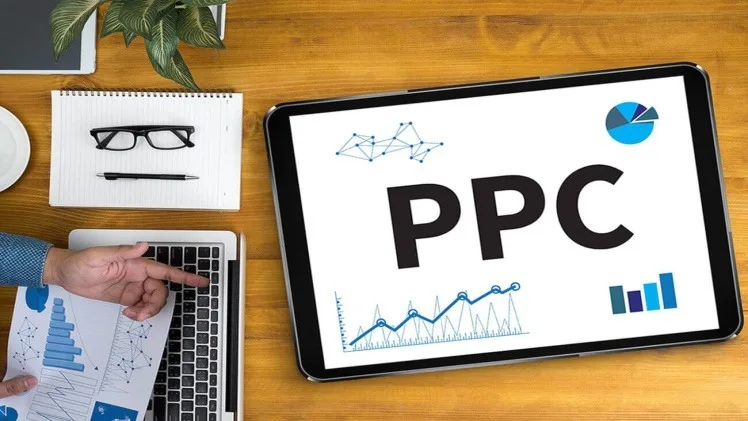PPC advertising, or pay-per-click marketing, is a form of online advertising where advertisers pay a fee each time someone clicks on their ads. PPC Advertising can help you reach your target audience, drive traffic to your website, generate leads, and increase sales.
But how does PPC Advertising work? And how can you get started with it? In this article, we will answer these questions and more. We will cover the basics of PPC Advertising, the benefits of PPC Advertising, the types of PPC ads, and the best practices for PPC Advertising.
What is PPC Advertising?
PPC Advertising is a type of online advertising where advertisers bid on keywords or phrases that are relevant to their products or services. When someone searches for those keywords or phrases on a search engine like Google or Bing, the advertiser’s ad may appear on the top or bottom of the search results page, or on the side of the page. The advertiser only pays when someone clicks on their ad, hence the name pay-per-click.
PPC Advertising is also known as search engine marketing (SEM), because it involves advertising on search engines. However, PPC Advertising can also include advertising on other platforms, such as social media networks (e.g., Facebook, Instagram, LinkedIn), video platforms (e.g., YouTube), display networks (e.g., Google Display Network), and shopping platforms (e.g., Amazon).
PPC Advertising is a type of digital advertising where you pay a fee every time someone clicks on your ad and goes to your website (or landing page or app). You can display your PPC ads on search engines like Google or Bing, or on social media platforms like Facebook or Instagram.
There are many terms and definitions that you need to know for PPC Advertising, but here are some of the most important ones:
- Search Engine Marketing (SEM):This is a broad term that includes both paid advertising and organic optimization on search engines.
- Cost-per-click (CPC):This is the amount that you pay for each click on your ad. CPC is based on your bid, which is the highest amount you are ready to pay for a click.
- Click-through rate (CTR):This is the percentage of people who view your ad and click on it. CTR is an indicator of how relevant and appealing your ad is to your target audience.
- Quality Score:This is a rating that Google gives to your ad based on its relevance, landing page quality, and expected performance. Quality Score influences your ad rank and CPC.
- Ad Rank:This is a score that determines the position of your ad on the search results page. Ad Rank is computed by multiplying your CPC bid and you’re Quality Score.
- Conversion:This is the desired action that you want your visitors to take after clicking on your ad, such as buying something, filling out a form, or signing up for a newsletter.
- Conversion Rate:This is the percentage of people who click on your ad and complete a conversion. Conversion Rate is a measure of how effective your ad and landing page are at convincing your visitors to take action.
- Return on Ad Spend (ROAS):This is the amount of revenue that you generate from your PPC campaign divided by the amount that you spend on it. ROAS is a measure of how profitable your PPC campaign is.
These are some of the basic terms and definitions that you need to know for PPC Advertising.
What are the Benefits of PPC Advertising?
PPC Advertising offers many benefits for advertisers, such as:
- PPC Advertising can help you reach a large and diverse audience across different platforms and devices. You can target your ads based on various factors, such as keywords, location, demographics, interests, behaviour, and more. This way, you can reach people who are most likely to be interested in your products or services.
- PPC Advertising gives you full control over your budget, bids, campaigns, and ads. You can decide
- PPC contributes to your business goals: You can use PPC to achieve various objectives, such as increasing brand awareness, generating leads, driving sales, and more. You can also track and measure your PPC performance easily using tools like Google Ads and Google Analytics.
- PPC is cost-effective: You only pay when someone clicks on your ad, which means you have more control over your budget and ROI. You can also adjust your bids and campaigns based on your performance and goals.
- PPC is fast and flexible: You can launch a PPC campaign in minutes and see immediate results. You can also change your ads, keywords, targeting, and budget at any time to optimize your campaign.
- PPC works well with other marketing channels: You can use PPC to complement your SEO, content marketing, social media marketing, and email marketing efforts. For example, you can use PPC to drive traffic to your landing pages, blog posts, or webinars. You can also use PPC to remarket to your previous website visitors or email subscribers.
- PPC provides valuable data: PPC gives you access to a wealth of data and insights that you can use to improve your marketing strategy. You can learn about your audience’s behaviour, preferences, interests, and needs based on their search queries, clicks, conversions, and more. You can also use PPC data to inform your SEO, content creation, and product development.
PPC ads can appear on different platforms, such as search engines, social media, or websites. Some of the Best platforms for PPC are as below.
- Google Ads: The most popular and widely used PPC platform, which allows you to display ads on Google search results, YouTube, Gmail, and other partner sites.
- Facebook Ads: The largest social media network, which offers various ad formats and targeting options to reach your audience on Facebook, Instagram, Messenger, and Audience Network.
- Microsoft Advertising: The second-largest search engine network, which lets you show ads on Bing, Yahoo, MSN, and other partner sites.
- LinkedIn Ads: The leading professional network, which enables you to reach decision-makers and influencers with sponsored content, text ads, video ads, and more.
- Amazon Ads: The biggest online marketplace, which helps you promote your products and brand to millions of shoppers who are ready to buy.
These are just some of the PPC platforms you can consider for your business. Depending on your goals, budget, and audience, you may want to explore other options as well.



